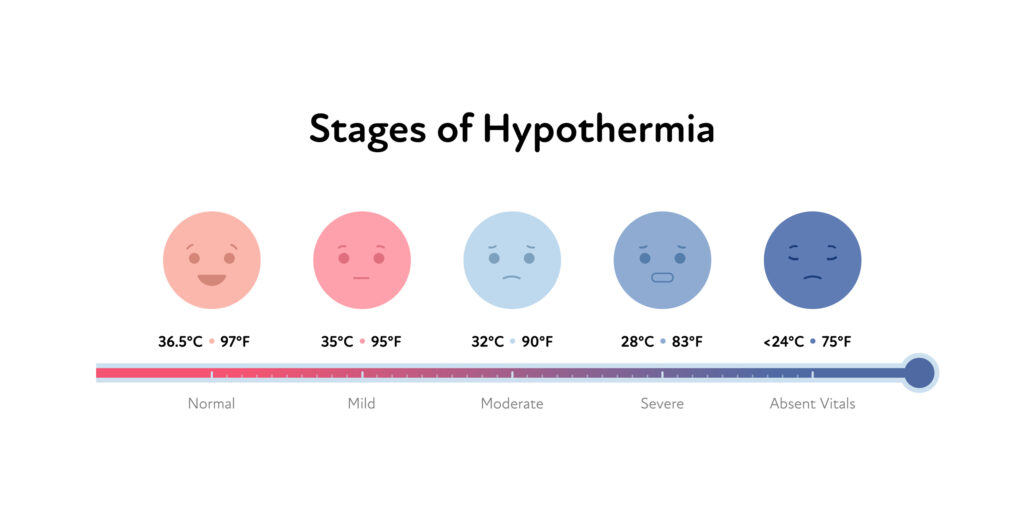If you’ve scrolled on social media at all in the last few weeks, you may have seen the “ice bath trend.” Plunging into ice water is a cool new trend, but it’s far from new. While ice bathing can be fun and can have some benefits, it’s dangerous for people with heart conditions. Let’s take a closer look at what the ice bath trend is and whether or not it’s healthy.
What is the Ice Bath Trend?
The ice bath trend is just what it sounds like; submerging yourself, up to the neck, in a tub filled with ice and water. Recently, the practice has attracted attention on social media, in particular, as several celebrities and fitness trainers have tried it, or highlighted their use of it.
This isn’t the first time an ice-water-related trend swept the internet. The Ice Bucket Challenge, where participants poured buckets of ice and water on themselves or friends, raised money for ALS in 2014, and became very popular. However, the ice bath trend isn’t clearly associated with a cause or fundraiser, and seems to be aimed at a physical or mental reset for one’s body. But is this accurate? Does it really work? And are there risks?
Get ice for your bath, cold drinks, and more
Find your closest ice vending machine with the ICE2U app »
Ice Baths Aren’t New

You’ve probably heard of ice bathing long before it became a trend. Ice baths have been used by athletes to help soothe sore muscles after intense workouts, for example. Ice baths are a type of cold therapy or cryotherapy, which uses drastic changes in temperature in an attempt to promote health benefits. Cold therapy may have been used as early as 3500 BC by ancient Egyptians, and later by ancient Greeks and Romans. Similar practices have also been used for thousands of years by Nordic cultures, where participants would enjoy a hot sauna, and then jump in freezing water.
These early cold therapy traditions don’t seem to be associated with athletics, as modern ice bathing is, but rather were used for recreation, relaxation, and healing. Some research supports these benefits, and shows that ice bathing can have helpful effects. However, there are some risks that are important to understand as well.
Can Ice Baths Really Heal You?
Ice baths have been said to provide a number of health benefits, from reducing muscle soreness and inflammation to improving mood and energy and even extending one’s life. It’s important to remember that there are many types of cold therapy, and many ways to actually implement this practice. These variations can make it difficult to reliably study the effects of ice bathing, but some evidence suggests real benefits from ice bathing that many different people might enjoy.
- Reducing muscle soreness: Reducing soreness and inflammation is perhaps the most well-known benefit of cold bathing. Cold temperatures can move lactic acid that causes muscle soreness away from the muscles, which helps to reduce soreness after intense workouts.
- Reducing stress: Some participants in cold therapy saw their levels of the stress hormone cortisol fall. Though cortisol isn’t the only part of stress, this effect indicates that cold therapy may help reduce stress in some cases.
- Slows metabolism: Cold temperatures cause some body processes to slow down, which temporarily slows your metabolism.
Keep in mind that some research on ice bathing has shown mixed results; some participants have reported health benefits and shown improvements, while others don’t. Also, similar activities, such as simply taking a cold shower or a cool bath, show some of the same benefits. However, if you enjoy ice bathing and you aren’t at-risk for the potential dangers described in the next sections, this may be a good practice for you.
Can Ice Bathing Be Dangerous?
You’re probably aware that humans, like most animals, have limited temperature tolerances. If your internal body temperature is over 106°F, usually due to fever or heat stroke, it can have serious consequences. Similarly, low temperatures can damage our bodies, too. Two of the most prominent risks are hypothermia, which lowers your body temperature to dangerous levels, and “cold shock” which can cause cardiac arrest. Let’s take a closer look at each of these potential risks.
Ice Bathing With Heart Conditions Is Dangerous
While many people can enjoy ice baths safely for short periods of time, ice bathing is not safe for those with heart conditions. Deaths have occurred from ice bathing due to undiagnosed heart conditions. Before trying ice bathing, you should check with your doctor to be sure your heart is healthy.
Plunging suddenly into very cold water can put your body in a state of “cold shock.” Your blood vessels will constrict suddenly, which causes your heart to suddenly work much harder. The sudden cold plunge can also create a panic response, which can make it harder to control your breathing and heart rate. This can then lead to heart failure and cardiac arrest in a few moments.
The American Heart Association warns against ice baths and cold plunges. If you’re not sure, it’s best to be cautious. Simply enjoying a cool bath, instead of an ice bath, can have helpful effects, with much less risk.
Hypothermia
At some point, you’ve probably been warned about the dangers of hypothermia, which occurs from exposure to cold temperatures. Ice bathing can introduce hypothermia risks.
Our normal, internal body temperature is about 98.6°F, though this can vary slightly from person to person. If your internal body temperature reaches about 95°F, the first symptoms of hypothermia will set in, including shivering, confusion, and weakness. An internal temperature of about 82°F can cause loss of consciousness, and an internal temperature of about 70°F or lower can cause death.
Your internal body temperature doesn’t immediately fall when entering an ice bath or another cold area. How quickly your body temperature falls depends on a number of factors, including how cold the area is, how warmly you’re dressed, and more. However, your body temperature will drop about twice or even four times faster in cold water compared to cold air of the same temperature. With this in mind, experts recommend ice bathing only for short periods, from about 30 seconds to 5 minutes, maximum. This timing can vary by the temperature of the water; A cold bath may be about 60–75 °F, while an ice bath is usually colder than 50°F.
Whether you’re enjoying a cold bath or an ice bath, pay close attention to how you’re feeling. If you feel confused or fatigued, it’s best to stop. Additionally, it’s best to enjoy a cold dip with someone else nearby. If you experience confusion, fatigue, and loss of consciousness, someone should be available to help you.
With a healthy heart and plenty of caution, ice bathing may be an enjoyable practice. However, it probably isn’t a good idea if you have a heart condition, high blood pressure, or risk for stroke or heart attack. If you’re looking for a way to get cool, reduce stress, or reduce muscle soreness, a cool bath and an ice water can be helpful too.



